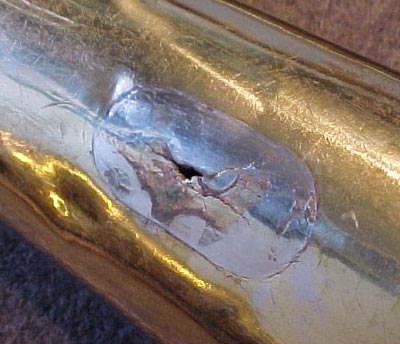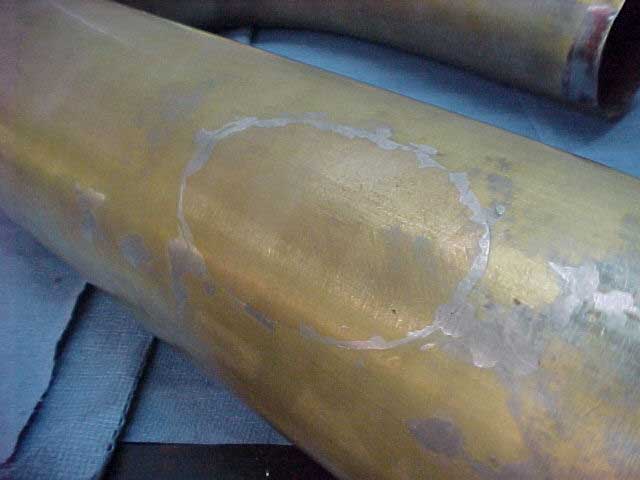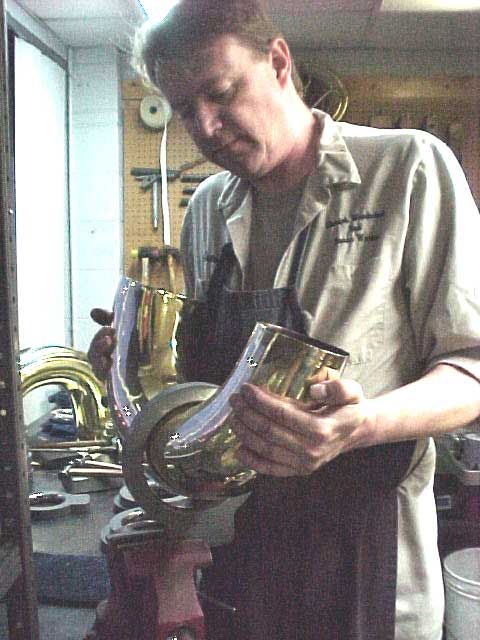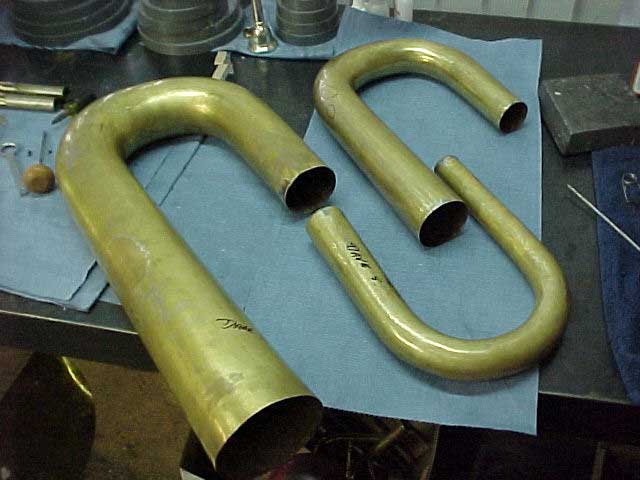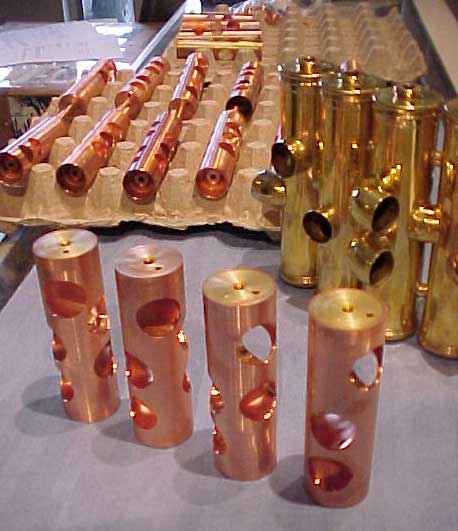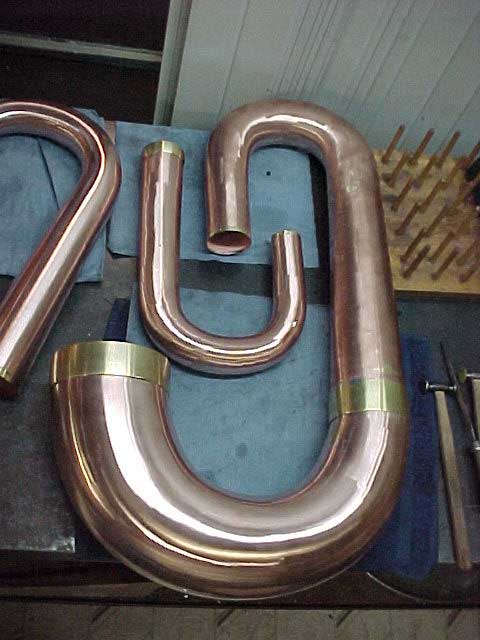Thanks!pulseczar wrote:That's some incredible work you do there Dan.
Yes, simply stated, that is what is going on, but at the risk of boring a few of the readers, let me add a little more info.pulseczar wrote: So first you had the piston copper plated and then you used the tool thing to grind it down to fit the valve casing and then lapped it. Then you got it nickel plated then did the same procedure again. Is that right?
WARNING: technical information that is probably not even understood by its author.
The operation is called honing. The two machines used in my shop for the work are Sunnen hones. The white one is set up and used for internal honing only as it is quite new and very accurate. It will hold a tolerance of .0001'', .00005'' on a good day when I have not been out too late the night before. The grey one ''Old No. 1'' built in 1961 has been in my possession for quite awhile and was the machine I was originally trained on. I use it only for external honing on parts such as pistons and casing mandrels.

The process employs an external honing tool assembly; this tool has special silicon-carbide honing stones in one side and bronze guide shoes in the other. A special custom made arbor is used to fix the large piston into the machine. The oil used is a special sulphur based formula that aids in the honing process.
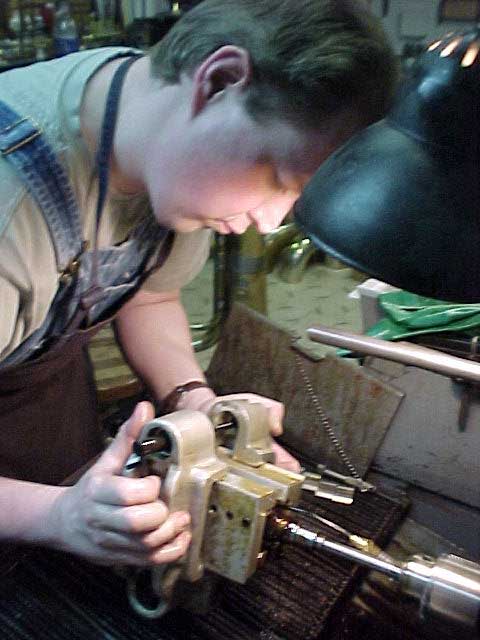
The precision set up tool is clamped around the piston and moderate pressure is applied on the piston while it is turning between the stones and shoes. The external hone is stroked back and forth; this slowly grinds down the high spots, trues and re-rounds the piston but also reduces its diameter. Because most of the big pistons I rebuild have rather nasty dents and at times are cracked or have holes in the ports, considerable effort is put into correcting them before we start the plating process. Once the piston is free of cracks and holes and is trued, we can start the process of building it up to the desired outside diameter so it will fit the cylinder accurately.
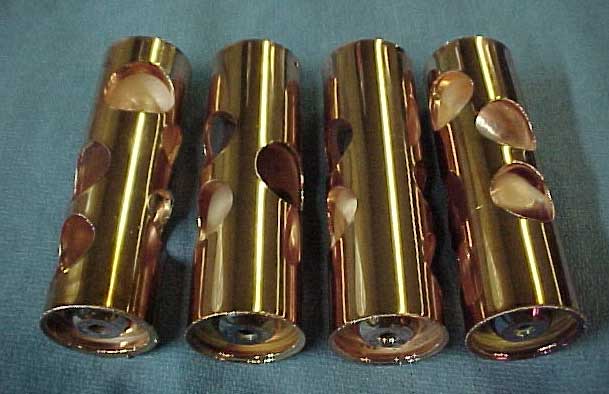
Shown above, the copper is electroplated onto the piston in thicknesses of .012''-.015'' +/-, it is then honed down until the piston is straight and cylindrical. The low areas such as pits and dents are reduced but not completely eliminated so the process is repeated, more copper, more honing. Eventually, the dents and pits are completely filled in with copper.
Once this has been achieved, the piston can be built up evenly and trued to the final desired size.
The piston is still a little undersize with respect to the cylinder but this is where we will finally nickel plate the piston and make up the difference. The nickel is plated to a thickness of .005''-.007'' thick. The piston is finally honed down to where it has a tolerance of .00025''-.0005'' with its respective cylinder.
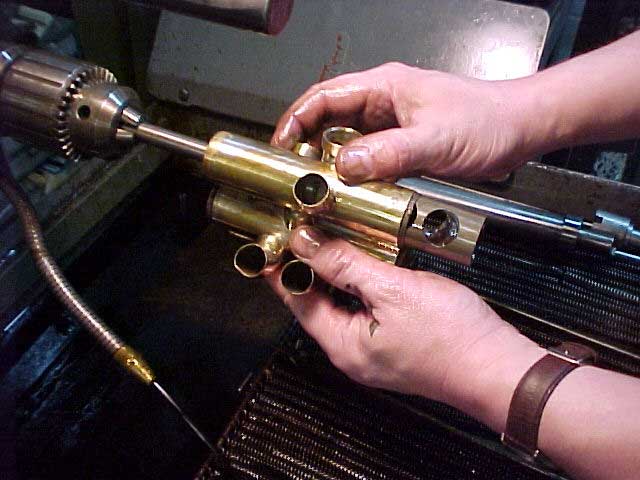
The piston is finally hand lapped lightly using a 1000 grit grease based lapping compound. The piston is worked into the cylinder with the compound grinding away tiny striation in the cylinder wall and eliminates any fine spots in the vale that will interfere with the action of the completed rebuilt valve. I hope this has shed a bit more light on the process.
Daniel C. Oberloh
Oberloh Woodwind and Brass Works
www.oberloh.com


